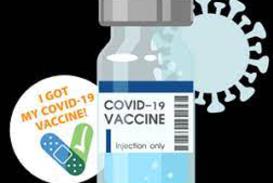Healthcare Medical Pharmaceutical Directory.com
Assisted Living
Business Trends...
- In 2021 assisted living providers are competing by providing care for patients at their homes during the pandemic plus creating new streams of income by retro-fitting facilities while improving EHR and data reporting platforms
- Marketing strategy must account for consolidation in the sector plus telehealth shifting some patients to home care status
- Scroll down to learn more about the assisted living healthcare sector and its largest provider organizations
... This is a profile of the Assisted Living provider business sector; scroll down for a list of top Assisted Living companies plus a list of leading Assisted Living professional associations...
Assisted Living Market Sector Overview
The Assisted Living healthcare sector requires its own market access strategy for healthcare product and healthcare service companies to successfully engage its key customer accounts, payers, group purchasing organizations, wholesalers, distributors, medical suppliers plus other supply chain and procurement stakeholders.
Assisted Living facilities, which number approximately 28,000 in the United States and provide care for over 1 million people, are a healthcare market segment coming under significantly more regulation, reduced reimbursement and competitive challenges. For 2021 it is a sector that is prioritized by the Federal government for COVID-19 vaccine distribution nationwide and will see extensive new operating guidelines in the future as the pandemic subsides.
About 70% of persons over age 65 will require some sort of care provided by Assisted Living and/or Long Term Care. The average age of patients is roughly 80 years of age, about 70 percent of them are female. There is a lesser number of professional medical staff on premises than Long Term Care/ LTC or Skilled Nursing Facilities/SNF "). Patients in Assisted Living facilities require less advanced healthcare support. While they are less regulated than LTC or SNF facilities, Assisted Living is coming under greater scrutiny for care and cost standards by municipal, state and federal agencies including the National Center for Assisted Living (NCAL).
The Distinct And Significant Differences Between Assisted Living And Long Term Care Healthcare Sectors
Assisted Living and Long Term Care are commonly perceived as one market sector but there are drastic differences between them including types of residents/patients, level of care, insurance coverage, payer contracting plus regulatory agencies and requirements at the local, state and national level.
Assisted Living focuses on the needs of patients (residents) requiring help with certain basic activities and responsibilities associated with daily self-care and physical well-being. Examples include these and other types of everyday actions and tasks which require assistance to perform:
- Functional and safe mobility to move about such as walking and getting in and out of a bed or chair throughout the course of a day
- Personal grooming and hygiene including bathing, showering, oral care
- Going to the bathroom for toileting purposes and cleaning oneself afterwards
- Getting fully dressed with attire in place and correctly affixed
- Eating meals and drinking fluids
Assisted Living facilities are not intended for persons with these and other conditions which require substantially greater professional care:
- Significant cognitive impairment
- Advanced behavioral challenges and issues
- Extensive medical conditions
- Require the care of a nurse often throughout the day
The misinterpretation of Assisted Living versus Long Term Care is that it is common for Long Term Care patients to require help with the basics of everyday life that is provided in Assisted Living. In addition to that support Long Term Care patients must also have additional care associated with much more significant challenges and needs that frequently require various credentialed medical, psychiatric or other healthcare professionals.
Patient Cost Sharing And Payer Reimbursement
Most of the reimbursement is through self-pay or through an insurance plan which covers Assisted Living, payment through Medicaid sources is low but growing. Many of the larger Assisted Living companies also operate Long Term Acute Care hospitals (LTACs), nursing centers and rehabilitative centers. Costs vary state by state but on average, the annual cost of Assisted Living services rises approximately 4.26%. As Medicaid reimbursement is reduced, it puts more pressure on Assisted Living providers to recoup costs and turn a profit.
Assisted Living can be further subdivided depending upon where the patient lives and where healthcare services are administered:
- Assisted Living Care in a facility: CPT codes 99324 - 99337
- Assisted Living Care at home: CPT codes 99341 - 99350
Evolving Business Strategies, Patient Care Models And Facility Adaptation
Assisted Living is evolving; facilities are adapting to become multi-purpose, multi-population complexes with specialized units for patients with physical, behavioral or other additional needs. These facilities require personnel with added caregiver credentials and also need enhanced IT systems and staff to manage day-to-day record keeping and billing for accurate reimbursement. A typical Assisted Living facility has between 40-45 units; some are as large as 150 to 200 units.
Depending on the facility and care it provides, a combination of Assisted Living transitioning to Long Term Care is offered by some. As these additions of care capabilities are made, facilities are then tasked with aligning to deeper regulatory standards and more complex reimbursement guidelines. The commercial goal is patient retention; rather than a patient leaving an assisted living company's facility and experiencing a subsequent loss in revenue.
The organizations retain the patient and whenever possible, provide for them to stay within the facillity but in a wing or or on a floor designated and staffed to care for them. While the patients may share some physical aspects of a facility location, Assisted Living and Long Term Care patients are still clearly cared for differently according to sharply defined medical, legal, payer and regulatory standards.
Technology In Assisted Living Facility Business Sector Is An Asset And A Potential Competitor
Telehealth is rapidly growing and can have a positive impact in the assisted living patient population. It enables patients to be cared for and monitored remotely via mobile technology. For fragile, high care patients living within assisted living facilities, clinician staff and the patient's primary care physicians can get ongoing insights as to their condition.
For some patients, telehealth enables them to be cared for while at home and reduce the need for them to be cared for on a daily basis in an Assisted Living facility. In this case, telehealth is considered a competitor to Assisted Living providers. As costs and care rise, telehealth is a go-to option supported by at-home visits by nurses as necessary. Assisted Living companies are integrating this technology into their services and programs within their facilities plus offering them to patients that live at their personal residences who need remote monitoring and care.
Consolidation Within The Assisted Living Sector
Based on rising expenses, increased regulatory oversight, reduced reimbursement levels and competitive challenges, consolidation driven by mergers and acquisitions is underway throughout the Assisted Living sector and will ramp up again later in 2021 if the pandemic subsides. Singular facility and small multi-facility assisted living operators with less than 10 sites are being swiftly acquired by larger operations. This is taking place in the commercial sector as well as those facilities operated by non-profit, faith-based organizations in metropolitan, regional and national marketplaces. It is being further driven as hospitals and health systems consolidate and combine their Assisted Living and Long Term Care management teams and facilities they operate.
... A list of Senior Care and Assisted Living Associations plus Government Agencies ...
... A list of the leading Assisted Living providers in alphabetical order ...
... Learn how remote patient monitoring and telehealth impacts care for seniors ...
... Consolidation continues across the Assisted Living Sector ...
... See details on the COVID-19 vaccine contract HHS has with Walgreens and CVS ...
... Learn about Amazon's New Alexa-based CareHub application targeted to senior populations, their families and caregivers ...
...A healthcare industry business intelligence resource with marketing strategy insights for pharmaceutical and medical device manufacturers, healthcare provider organizations, medical software and technology enterprises, patient care service companies and management consulting firms spanning a global community of users from 50+ nations...


